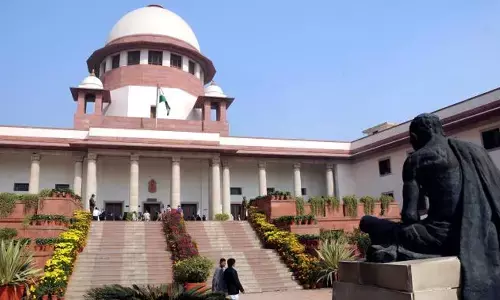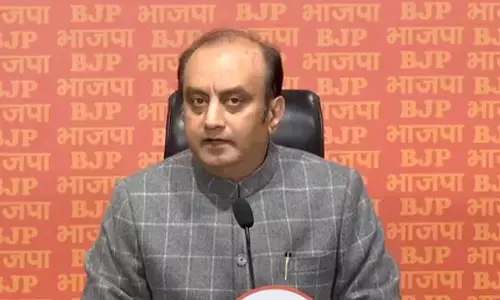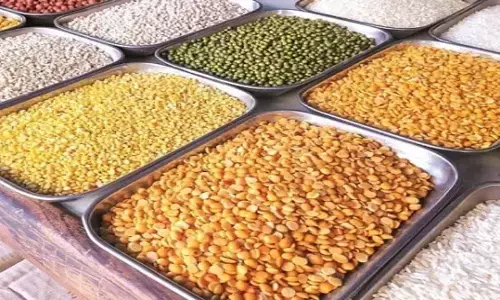Eulogy to the Sun God

Great is the sun and wide he goes Through empty heaven with repose; And in blue and glowing days More thick than rain he showers his rays - Robert Louis Stevenson’s
The silver beams of the moon may be associated with dreams, creativity and the magic of love, but the sun with its golden rays dispelling both the darkness of the night and the ignorance of the soul is no less celebrated. The nourishing and energizing qualities of the sun have been recognised, eulogized and revered across all cultures of the world as intrinsic to life and awareness that is unique and all important to human existence. Lord Surya or sun god said to ride the sky on his chariot defeating the demons of darkness finds mention in the Rig Veda, the oldest of the Vedas. Known by many epithets like Vivaswat (Brilliant), Savitr (nourisher), Dinakar (creator of the day) Bhaskar (light provider), Loka Chaksuh (eye of the world), Sahasra Kiran (of a thousand rays) and Graharaja, (Lord of the planets) the sun god is worshipped for health, peace and victory. The 'Aditya Hrudayam' a hymn associated with the sun finds an important place in the epic Ramayana where a battle-weary Rama vanquishes Ravana after being energised with the recitation of the hymn narrated to him by sage Agastya. The powerful Gayatri mantra is also dedicated to Savitr, the vedic sun deity while the Surya Namaskar or sun salutation is a practice in Yoga incorporating a series of 12 gracefully linked asanas done repeating the twelve names of the Sun God.
Makara Sankranti is an important festival dedicated to the sun celebrated when it transits into Makara (Capricorn) marking the end of the winter solstice and is the only one celebrated as per the solar cycle. This is unlike majority of Hindu festivals that follow the lunar cycle. It ushers in the auspicious Uttarayana period where the warmth of the sun embraces the earth and the 'close on the heels' spring follows with nature in celebratory mode. The harvest festival of Sankranti is not just about prosperity but the period which connotes a new dawn, new beginnings and a break from the past. Literature in all Indian languages attributes revolutions, changes, hope and positivity to the sun and there are innumerable poems on this subject that are heart -warming. English poetry in particular has beautifully unraveled different facets of the sun's glory embellished by the poet's perspective.
"Great is the sun and wide he goes/ Through empty heaven with repose;/ And in blue and glowing days/ More thick than rain he showers his rays" Robert Louis Stevenson's poem with a graphic description of the sun is both endearing and thought provoking. Dr. Oliver Tearle a literary critic has a list of ten sun poems where he describes the sun as a wonderful ball of Hydrogen and Helium that makes life on earth possible. Ella Wheeler Wilcox's poetic description of 'Dawn' is a gem of a morning poem and a tender description that tugs at the heart. Dawn here according to the poet is when the light from the Sun "kisses the languid lips of night". John Donne's celebrated poem "The Sun Rising" still rendered in the original spelling "The Sunne Rising' begins with him chastising the sun for peeping through the curtains, rousing him and his lover from their beds and asking them to wake up. Interestingly he tells the sun that he may well be blinded by looking upon the dazzling and beautiful eyes of his beloved.
The sun can be a symbol of peace too as one discovers from "O Sun of Real peace" by Walt Whitman which celebrates the end of the American civil war. Here the sun is a symbol of freedom from oppression. Philip Larkin's 'Solar' which tells the Sun 'You give forever' celebrates it as a source of energy giving life, light and positive power. Prayerfulness, pessimism, hope, celebration and love are the different sun hues that warm our hearts through the sheer power of emotion and the beautiful use of allegory, rhythm and profundity. There are many wonderful poems out there but Jenny Joseph's 'The Sun Has Burst the Sky/ Because I Love You' is a beautiful love poem where the sun's radiance is attributed to the power of love. As we bask in the warmth of the sun and the festivity in the air, the glow from reading beautiful 'sun poetry' defies description. It is experiential and all I can say is verily 'Sunny'.














